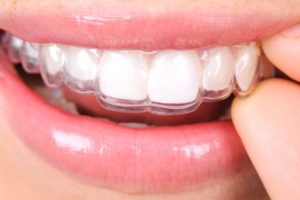 It’s not the news you want to hear as a parent, or even an adult who has been waiting to find the right time to get braces or aligners, but the truth is over the course of our lives, everyone’s teeth will shift – regardless of whether or not they have had orthodontic treatment.
It’s not the news you want to hear as a parent, or even an adult who has been waiting to find the right time to get braces or aligners, but the truth is over the course of our lives, everyone’s teeth will shift – regardless of whether or not they have had orthodontic treatment.
The American Association of Orthodontists has asserted that the most stable position of a tooth is where it is naturally placed with no intervention – aka braces, surgery, or cosmetic enhancements. (Can you hear Lady Gaga singing “Baby, you were born this way”? No? Just us? Ok… moving along…)
Teeth move throughout our lives and it’s important to note that natural forces, such as biting, chewing, and swallowing, all impact your teeth and their position in your mouth. Tooth movement is most active during the facial growth cycle, which is typically from infancy until approximately 22 years of age.
Abnormal bites usually become noticeable between the ages of 6 and 12, which is why most parents pursue orthodontic treatment for their children between ages 8 and 14. At OBC, we will always customize treatment so patients receive proper care at the proper time.
Did you know that teeth don’t actually contact bone? They are connected to the bone by ligaments, which are made of collagen. As we age, our collagen production decreases, meaning the supporting structure for our teeth decreases. What all of this means is movement is natural and to be expected.
Stop Right Now, Thank You Very Much (Spice Girls, anyone?)
This is why wearing a retainer is super important. We want those teeth to stop where they are after they’ve been adjusted by braces or aligners. You probably know, but we’ll mention it just in case, retainers are fitted to upper and/or lower teeth to hold them in their finished positions. When worn as prescribed, retainers are the best tool available to minimize unwanted tooth movement after active treatment ends.
Retainers protect your investment and keep your new smile looking beautiful! Retainers are used for all patients and are always necessary after both traditional braces and OBC clear aligners.
When you wear your retainer, you’re helping to:
- Stabilize your bite
- Keep bones and gums aligned
- Prevent more orthodontic treatment
How long do I have to wear the retainer?
This is one question we get asked the most. Let’s face it – no one really wants to wear a retainer but they DO want to keep their beautiful smile. OBC believes you can’t have one and not the other.
Retainers are for “retaining your beautiful new smile” – and it is crucial to wear them after getting your braces off full-time for 3 months (22 hours a day) and then transition into wearing it at night only (after dinner until the next morning).
Parents – I know what you’re thinking…”does this mean my child has to wear their retainer to school?”. Yes, but only for a brief time.
If you’re an adult fresh out of braces or aligners, you can alter your schedule based on what is best for you. For example, young adults may notice that wearing their retainer once a week is enough to keep their teeth aligned. We encourage patients to periodically “check” their tooth status by putting in their retainer. If it is mildly uncomfortable, you may want to increase the amount of time you are wearing your retainer. If it fits nicely, you can maintain the schedule you’re on.
While some practices think the removable retainer and the “permanent retainer” have the same results, Dr. Crutchfield knows this is just wishful thinking. Fixed retainers or “permanent retainers” create several hygiene issues:
- Inability to properly floss
- They attract plaque
- They cannot provide the stability a tray retainer does
If you have questions or concerns, or you lost your retainer at school (whoops!), please call our office at 703-263-0575 or email us at services@obcortho.com.